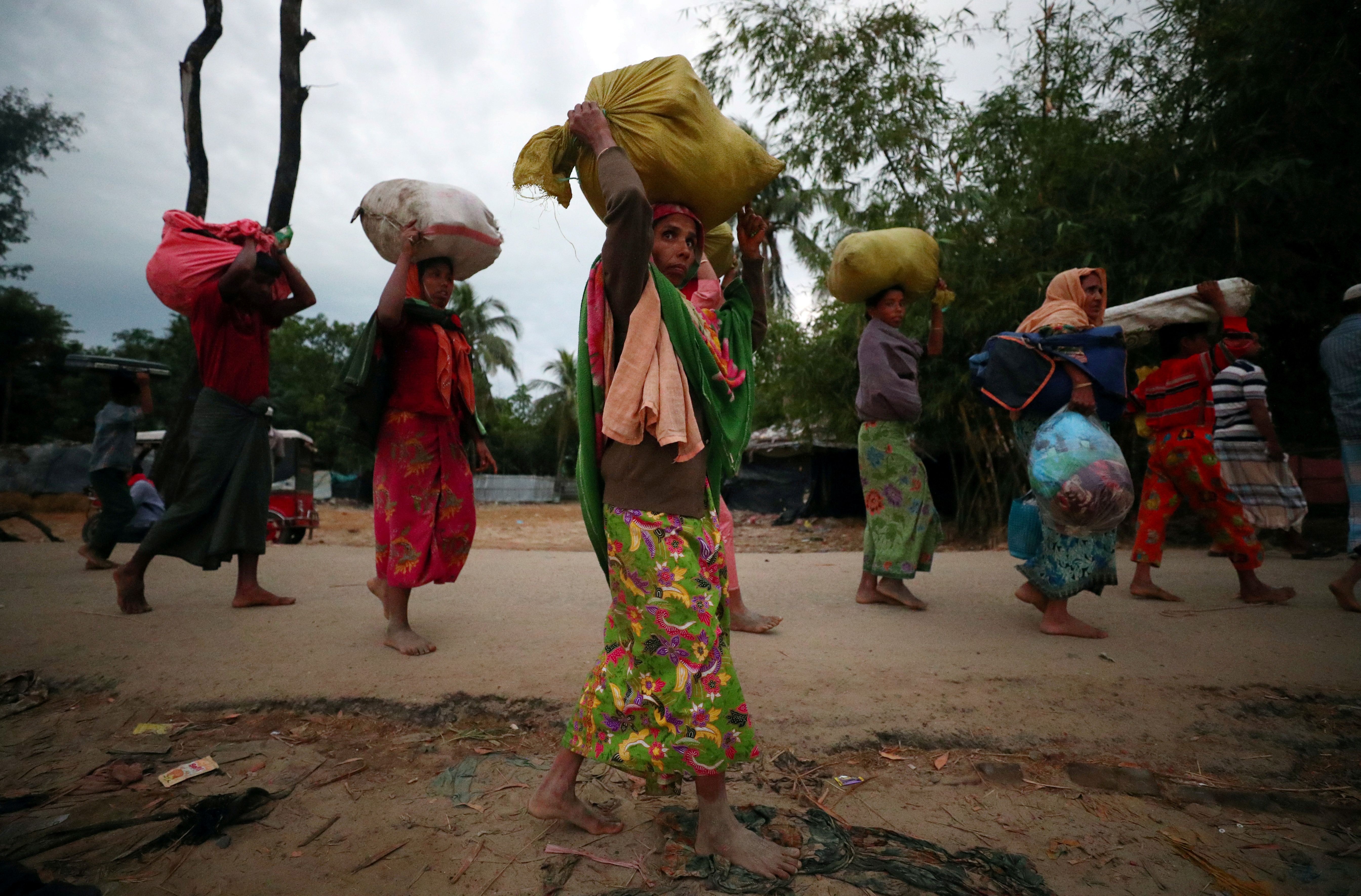The Protracted Rohingya Crisis in Bangladesh and the Prospects of a Resolution

A Multilevel Humanitarian Crisis
The violent campaign against the Rohingya Muslim minority in Myanmar, which began on 25 August 2017, resulted in an exodus of over 740,000 people to neighbouring Bangladesh. Together with earlier waves of refugees, there are currently 918,000 Rohinghya (the biggest global stateless group) in the Cox Bazar district in the south of the country. Most of them (over 640,000) live in the world's largest refugee camp in Kutupalong. More than half of this group (55%) are children, and 52% are women. Every year, around 30,000 to 35,000 children are born, causing a steady increase in this population. Over the past two years, their living conditions have improved by the provision of shelter, free food rations, access to basic health care and education. However, Bangladesh, which is not a party to the 1951 Geneva Convention, does not legally recognise the Rohingyas as refugees. This means that they have no right to free movement around the country, or to other public services. They cannot legally work outside the camps or marry local residents, among other restrictions.
The protracted crisis is increasing the burden on Bangladesh, which is already calculating its total costs at around $600 million. This is one of the poorest and most densely populated countries in the world, accounting for only 0.44% of global GDP but hosting 4.5% of the global refugee population. They reside in one of the poorer regions of the country, where there they already outnumber the local population two-fold. The sharp rise in population causes degradation of the natural environment and has a negative impact on the local community, including worsening the economic situation of the poorest (for example, because of rising prices, falling wages and increasing inequality). The tensions between residents and refugees made the authorities take steps to increasingly isolate the Rohingya. Mobile phone networks in the camps are restricted, the camps are being fenced, and the operation of foreign NGOs is hindered.
Increasingly, Bangladeshi authorities point at the growing threats to national and regional security. They emphasised a surge in crime, in particular drug, human and arms trafficking. Refugees may be susceptible to radicalisation by Islamic extremists, or to joining global terrorist organisations or separatist groups in the region. Securitisation of the problem can also be a way to draw more attention of the world to this crisis.
What can Bangladesh Do?
The Rohingya crisis is one of the most important internal and international challenges for Bangladesh. The authorities are disappointed by the attitude of Western countries and foreign institutions that they say do not sufficiently recognise the openness of Bangladesh to the Rohingya, and exert too little pressure on Myanmar. At the same time, there are growing concerns that the combination of a protracted crisis and donor fatigue could cause scaling down of assistance, which would leave Bangladesh alone with the problem. Although it is most likely that the status quo will be maintained indefinitely, there are several options from a government perspective to resolve the crisis.
The basic and preferred solution is still a “voluntary, dignified and safe” return of Rohingya to their homes. However, conditions demanded refugees (for example, being granted citizenship of Myanmar, and the accountability of perpetrators of persecution) are rejected by the authorities of Myanmar. Despite two repatriation attempts, in November 2018 and August 2019, no single Rohingya took advantage of this opportunity. Still, the government hopes that rebuilding trust between Rohingya and Myanmar will allow this scenario to be realised. This would be helped by creating a “safe zone” in the state of Rakhine where the Rohingya come from, where their safety could be guaranteed by members of the “confidence-building mission” consisting of representatives of ASEAN, China and India.
The second option, strongly rejected by Bangladesh, is the integration of the Rohingya with Bangladesh society. Resistance to this solution is associated not only with the limited possibilities of the overcrowded state, but also with the fear of legitimising Myanmar's illegal activities and the risk of creating a precedent for similar situations in the future.
The third option, the most extreme and least likely, is the resettlement or even unilateral expulsion of Rohingya. It is already planned to relocate about 100,000 refugees to the uninhabited island of Bhasan Char in the Bay of Bengal. The step, criticised by aid organisations, can also be seen as part of the pressure on the international community to find a lasting solution. Increasingly, but unofficially, extreme opinions appear about the need to allow Rohingya to emigrate illegally from Bangladesh, or to arm and support them so they can fight for their own homeland.
The Role of the International Community
Foreign donors play a key role in financing Rohingya relief. Humanitarian need in 2019 was estimated at nearly $920 million, of which only 69% was met (down from 72% in 2018). Among the main donors were the United States ($246 million), the United Kingdom ($99 million), Australia ($37 million), the European Union ($30 million) and Germany ($21 million). At the same time, at least 30% of foreign aid is directed to the host community at Cox Bazar. International organisations are also trying to convince the Bangladeshi authorities to increase the scope of support for Rohingya (such as in education and vocational training).
Most countries and organisations condemned Myanmar's actions and called for the creation of conditions for the return of refugees and holding to account those responsible for persecution. In addition to political and diplomatic pressure, several cases have been brought against Myanmar before international courts, including the International Criminal Court and the International Court of Justice (ICJ). The last resolution of the ICJ from 23 January, ordering the Myanmar authorities to take all interim measures to protect the Rohingya, increases pressure on this country, but the resolution is unlikely to be implemented.
The case of the Rohingya also creates an opportunity to resume discussions at the United Nations on humanitarian intervention in failed or rogue states. The example of Turkey's unilateral intervention in Syria to create “safe zones” for refugees shows that similar crises can also occur in other regions. Another solution could be the voluntary resettlement of Rohingya to interested third countries (for example, those with a Muslim culture) under the UNHCR system.
Conclusions and Recommendations
There are currently no realistic prospects for a rapid end to the Rohingya humanitarian crisis. Even if the Myanmar authorities cooperate with Bangladesh to repatriate them, the whole process will take several years. Meanwhile, the growing number of refugees, coupled with decreasing international support, threatens to worsen the living conditions in the camps, risk radicalisation of the Rohingya, and raise tensions with the local community. New problems may spread beyond Bangladesh in the form of terrorist threats or illegal migration.
To prevent this, it is necessary to continue and increase international aid for Bangladesh and move from the stage of saving lives (humanitarian aid) to creating conditions for the sustainable development of both Rohingya and the host community (development aid). It is important that the EU and the U.S. intensify pressure on the Myanmar authorities to cooperate to solve this crisis. The effectiveness of the pressure will depend, however, on whether China and India are convinced to join the push to persuade Myanmar to change its attitude towards Rohingya.
Poland may use its membership of the Human Rights Council (2020 to 2022) to raise the issue of Myanmar’s compliance with the provisions of the ICJ on ensuring Rohingya safety. Regardless, Poland should join international humanitarian aid efforts in Bangladesh. Greater involvement in solving this crisis will strengthen Poland’s image as a defender of international law and a country tackling the root causes of migration.



